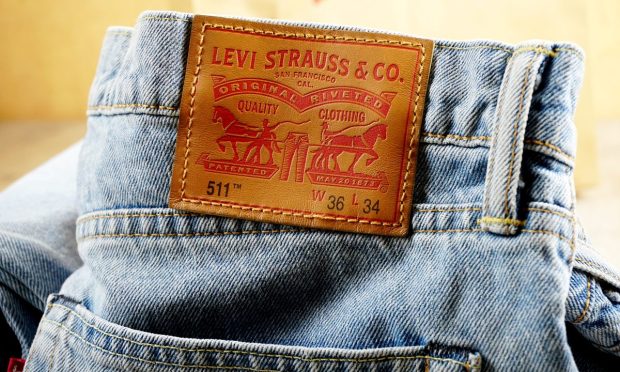Levi’s Flexes Brand Power Pricing Muscles, Touts D2C Success of Next-Gen Stores

Strong demand from customers around the world combined with brand power that enabled price increases saw denim retailer and manufacturer Levi Strauss start the year with double-digit sales growth and record gross margins.
In discussing its first-quarter results for the three months that ended Feb. 27, the San Francisco-based company also said its ongoing shift to grow its digital and direct-to-consumer (D2C) businesses was paying off, noting that total revenues rose 22% while its D2C sales rose 35%.
“Our brand equity has never been stronger and is driving outsized growth,” Levi’s CEO Chip Bergh told analysts and investors on the company’s webcast Wednesday (April 6) afternoon, adding that the brand strength had enabled the company to raise AURs (the average price per unit sold at retail) by10% without negatively impacting customer demand.
“Our ability to effectively take price [increases] has enabled us to mitigate cost pressures including inflation and logistics,” Bergh said, noting the company’s intentions to implement further increases this year and next if needed, while acknowledging the company’s unique status as “the global leader in a large and fast-growing market.”
The Price of Iconic
Demand for Levi’s best known and top selling “501 jeans” rose nearly 50% in Q1, Bergh said, outpacing a broader bounce in demand for men’s and women’s denim pants which rose 24% and 21% respectively.
At the same time, Bergh said the company’s D2C growth was driven by a 10% increase in eCommerce and a 48% jump in sales at company-operated stores, a gain that was partly due to the fact that about one-third of its stores were closed due to COVID the prior year.
Even so, Bergh said “the differentiated experience” Levi’s is now offering at its brick-and-mortar locations appears to be gaining traction, especially as its redesigned, digitally interactive store format expands in the U.S. and provides what the company calls “an elevated brand expression and personalized experience.”
“These [next gen] stores are showing encouraging results like Northpark Mall in Dallas, which in its second month of operation was the most productive store in our U.S. fleet,” Bergh told investors.
Digital and Partners
To be sure, the Levi’s app is at the center of all company growth plans, and the digital platform continues to add new foreign markets, including India this quarter, while attracting additional customers in existing locations.
Officially, Levi’s said monthly active users more than doubled in the quarter, which it said led to increased traffic and conversion across the U.S. and Europe.
In total, Levi’s digital revenues rose 16% in Q1 — despite increased competition from reopened stores — and accounted for approximately 25% of sales.
At the same time, Levi’s is still selectively growing its wholesale business, such as with retailers like Urban Outfitters that give it premium floor space, and is also looking to expand its retail partnerships, such as its deal with Target, which will come to 300 additional locations this year and add over 60 exclusive new products.
Despite the fact that Levi’s is facing the same cluster of cost challenges that are affecting all of its industry peers and also impacting consumer purchasing decisions, the company’s outlook and financial guidance remains positive.
“On balance, despite these incremental headwinds, given the strong momentum in our business, we are reaffirming our full-year guidance and continue to expect double-digit revenue growth for the full year of 11% to 13%,” CFO Harmit Singh said.
Levi’s shares are up about 70% from the March 2020 lows, but down about 25% from a peak last April.
